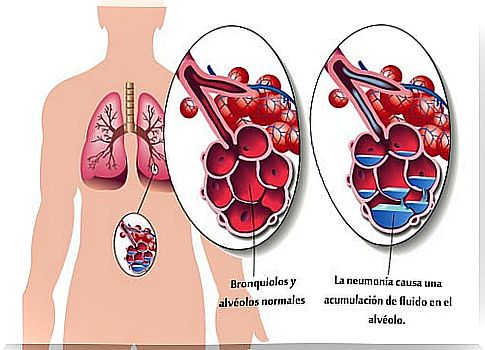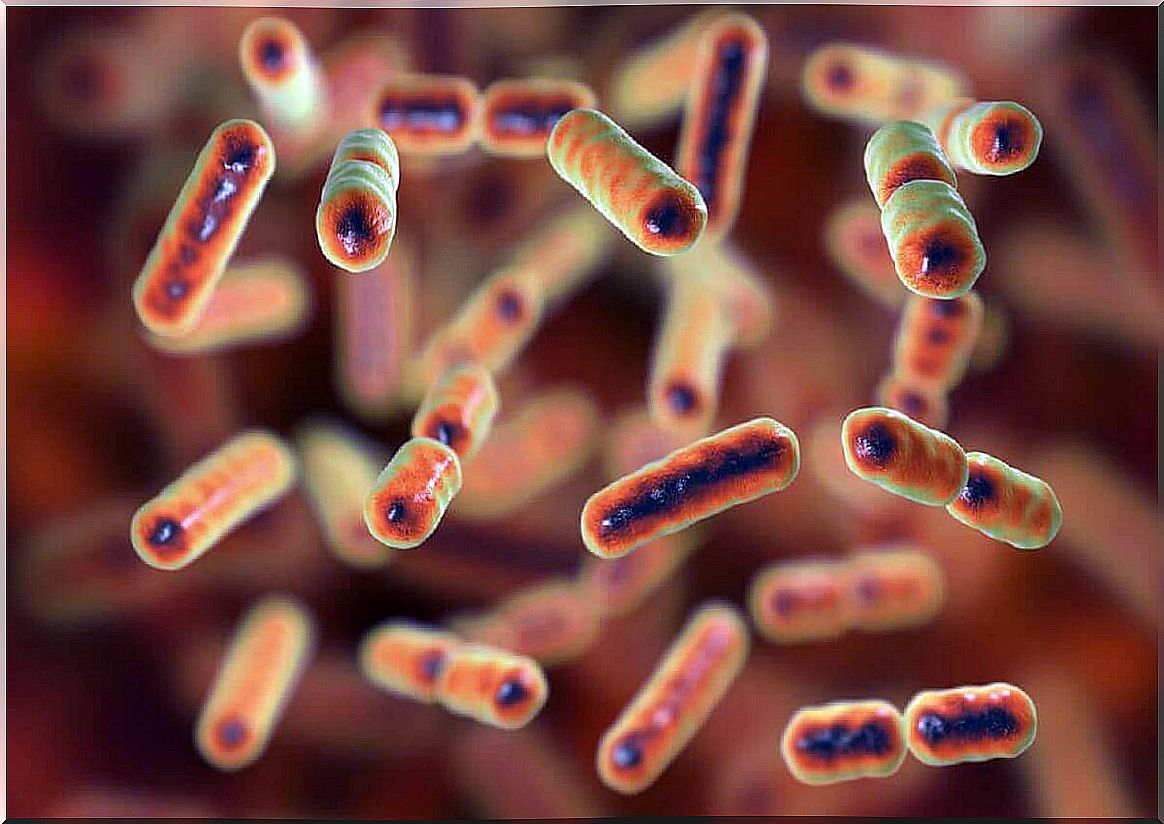Pneumonia Or Pneumonia
First, we must define pneumonia, or pneumonia. Pneumonia is a disease that consists of inflammation of the alveolar spaces of the lungs due to the presence of fluid in the alveoli. Therefore, it is usually infectious. However, only the agent that causes it is detected 40% of the time.
Among other symptoms, inflammation of the alveolar spaces causes:
- Fatigue.
- Fever.
- Chest pain
- General discomfort.
- Headache.
- Loss of appetite
- Cough with expectorations.
- Dyspnea or shortness of breath
On the other hand, let’s remember that the alveoli are the structures responsible for gas exchange in the lungs .
Types of pneumonia
First, it is important to distinguish between the different types of pneumonia that exist. Depending on where the disease was acquired, the symptoms, diagnosis, and treatment will differ.

Community acquired pneumonia (CAP)
This is the type that affects immunocompetent people in the general population. Actually, it refers to the group of people who are not hospitalized or who have been hospitalized for less than 48 hours.
Nosocomial pneumonia (NN)
It is one that affects patients hospitalized for more than 48 hours or immunodeficient people. Thus, in a hospital, we find patients with weakened immune systems and microorganisms that are highly resistant to antibiotics. Therefore, the appearance of more serious and deadly pneumonia is favored.
Risk factor’s
- AIDS.
- Malnutrition
- Mellitus diabetes.
- Age over 60 years.
- Endotracheal intubation.
- Prolonged hospitalization.
- Alcoholism and smoking.
- Corticosteroid treatment.
- Chronic obstructive pulmonary disease (COPD).
What microorganisms cause pneumonia?
Pneumonia can be caused by various microorganisms, such as fungi, viruses, or bacteria.
For example, the most common are the following:
- Steptococcus pneumoniae.
- Mycoplasmas psneumoniae.
- Haemophilus influenzae type B.
- Legionella pneumophila.
- Pneumocystis jiroveci.
- Respiratory syncytial virus.
The bacteria Steptococcus pneumoniae, popularly known as ‘ pneumococcus, is the most common cause of pneumonia in children. On the other hand, Pneumocystis jiroveci is the main cause of pneumonia in patients with HIV.
Characteristics of microorganisms
In order for a bacterium or a virus to infect the lung parenchyma, it must be able to survive in the air for a long period of time. In addition, it must be smaller than 1 micrometer (1μm) so that it can reach the alveoli.
How does pneumonia appear?

Microorganisms penetrate to the alveoli through the air we inhale. Later, once there, they colonize and infect the area, which produces large amounts of fluid that congest the lungs, making breathing difficult.
The first symptoms to appear are dyspnea and pleuritic chest pain, being also the most specific and sensitive. Typically, the incubation period is between 24 and 48 hours.
Symptoms of pneumonia
- Dyspnoea.
- Fever.
- Headache
- Crackles.
- Shaking chills.
- Arthromyalgia.
- Tubal murmur.
- Cough with expectoration.
- Dullness in percussion.
- Pleuritic chest pain.
- Decreased vesicular murmur.
- Increased vocal vibrations.
Pneumonia involvement
The infection can affect different lung areas, for this reason, we distinguish different types of pathologies.
Alveolar or lobar pneumonia
In the case of alveolar or lobar pneumonia, multiple alveoli fill with purulent exudate, which can affect an entire lobe, but respecting the bronchioles. It usually corresponds to a radiological pattern of alveolar condensation.
Multifocal pneumonia or bronchopneumonia
Multifocal pneumonia (also known as bronchopneumonia ) can affect the alveoli and their bronchioles, but it does so in segments, so whole lobes are not usually affected.
Interstitial pneumonia
As scientific evidence indicates, interstitial pneumonia occurs due to a virus, which respects the bronchial and alveolar lumen and only affects the pulmonary interstitium.
Necrotizing pneumonia or lung abscess
Some organisms are capable of destroying the lung parenchyma. In this way, they create abscesses and large areas of necrosis throughout the lung, which appear hypodense on radiography. It corresponds to the radiological pattern of cavitating infiltrates.
Diagnosis
The etiological diagnosis orients towards pneumonia with sputum, blood cultures and pleural fluid cultures in addition to antigen detection. To make a final diagnosis, an x-ray will need to be performed.
Regarding this, according to a recent study carried out in Colombia:

Alveolar condensation pattern
This is the typical radiological pattern of Streptococcus pneumoniae pneumonia. Therefore, in it we see the lung parenchyma with a cottony appearance and the completely hypodense bronchi.
Bronchopneumonia pattern
In this case , the lung is observed patchy by cottony areas, including the bronchi, and areas of lower density.
Cavitating infiltrate pattern
In this radiological pattern , hypodensities appear in the center of the cottony areas, which is known as pneumatoceles . This type of pneumonia is caused by Staphylococcus aureus and is more serious because it is an atypical microorganism.
Treatment
Treatment will always be oriented according to the type of disease that patients present and the cause of it. That is, depending on the pathogen that is causing the disease, we must take one drug or another, as indicated by the specialist doctor.
Antibiotics should be chosen based on the bacteria that is causing the infection. Similarly, in the case of a virus, they can be used prophylactically to avoid superinfections.
The most commonly used antibiotics are the following:
- Cephalosporins.
- Quinones such as levofloxacin.
- Amoxicillin and clavulanic acid.
- Macrolides such as clarithromycin, azithromycin, or erythromycin.
Finally, patients with mild pneumonia can be treated at home with oral antibiotics, rest, and good hydration. Of course, proper nutrition will always be of great help.









